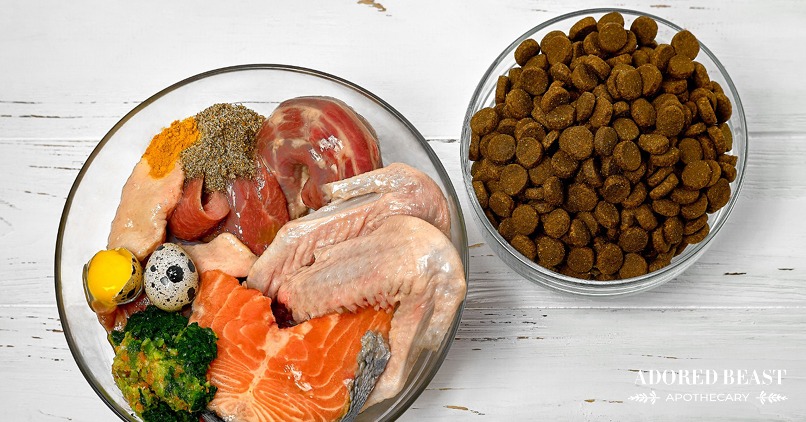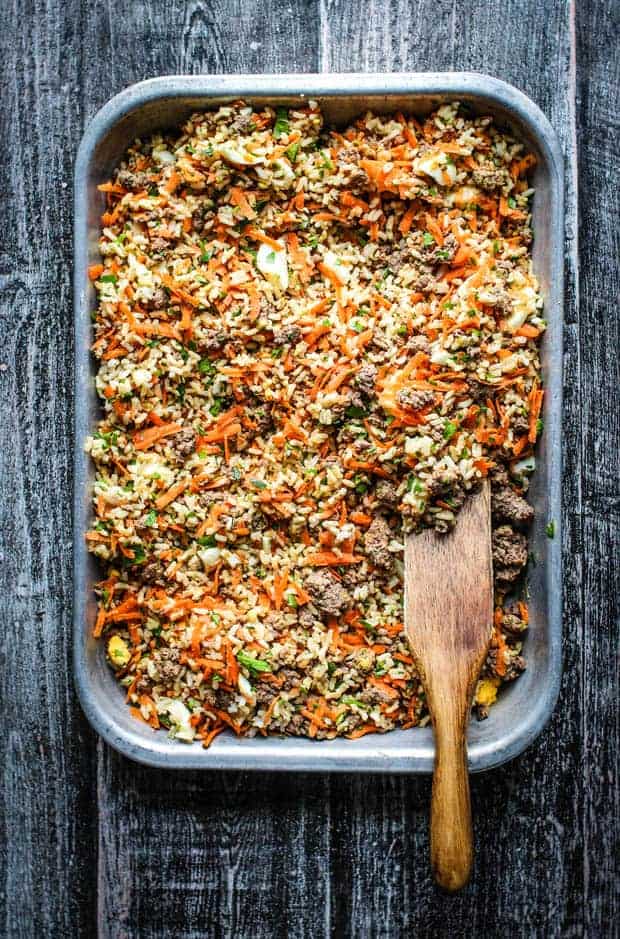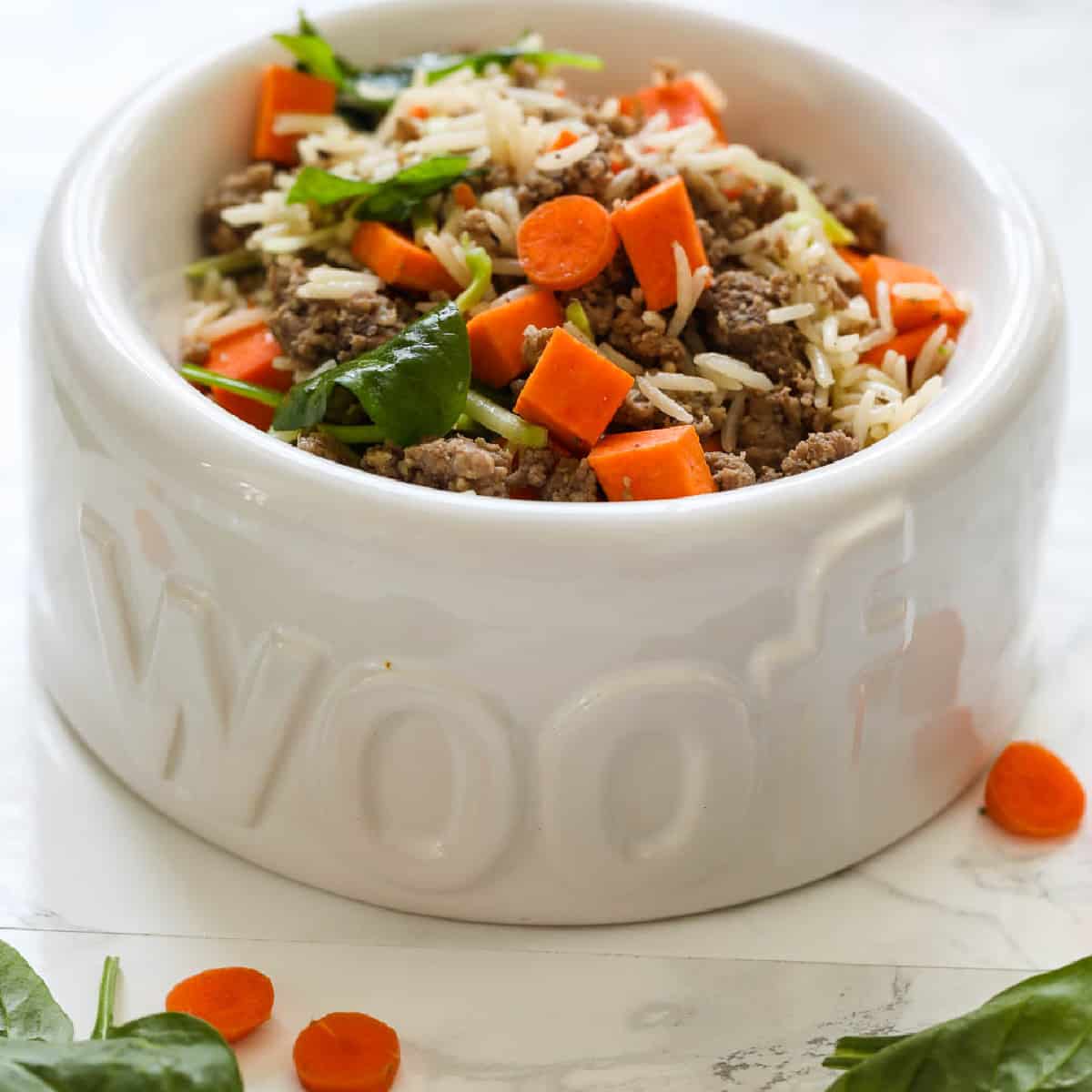homemade dog food kibble
Homemade Dog Food Kibble
Introduction

There are many reasons why you might want to make your own dog food kibble. Maybe you're concerned about the quality of commercial dog food, or you're on a tight budget. Or perhaps you simply want to give your dog a more personalized diet.
Whatever your reasons, making your own dog food kibble is a relatively simple process that can be very rewarding. In this article, we'll walk you through the steps of making homemade dog food kibble, from choosing the right ingredients to storing your finished product.
Choosing the Right Ingredients

The first step in making homemade dog food kibble is choosing the right ingredients. You'll need to select a protein source, a carbohydrate source, a fat source, and a variety of vitamins and minerals.
Protein Sources
The most common protein sources for dog food kibble are meat, poultry, and fish. When choosing a protein source, it's important to select a high-quality, lean protein that is free of hormones and antibiotics. Some good options include:

- Beef
- Chicken
- Turkey
- Lamb
- Fish
Carbohydrate Sources
Carbohydrates provide energy for your dog, and they also help to bulk up the kibble. The most common carbohydrate sources for dog food kibble are grains, such as rice, oats, and barley. Other good options include:
- Potatoes
- Sweet potatoes
- Pumpkin
- Yams
Fat Sources
Fats are essential for your dog's health, and they help to provide energy, support the immune system, and keep your dog's coat healthy. The most common fat sources for dog food kibble are oils, such as olive oil, canola oil, and safflower oil. Other good options include:

- Butter
- Ghee
- Lard
Vitamins and Minerals
Vitamins and minerals are essential for your dog's health, and they help to support a variety of bodily functions. When making homemade dog food kibble, it's important to include a variety of vitamins and minerals to ensure that your dog is getting the nutrients they need.

Some good sources of vitamins and minerals for dog food kibble include:
- Vegetables
- Fruits
- Eggs
- Yogurt
- Milk
Making the Kibble

Once you've chosen your ingredients, you can start making the kibble. The process is relatively simple, and it can be done in a few steps:
- Preheat your oven to 350 degrees Fahrenheit.
- In a large bowl, combine your protein source, carbohydrate source, fat source, and vitamins and minerals.
- Mix well to combine all of the ingredients.
- Form the mixture into small balls or patties.
- Place the balls or patties on a baking sheet lined with parchment paper.
- Bake for 30-40 minutes, or until the kibble is golden brown and dry.
- Let the kibble cool completely before storing it in an airtight container.
Storing the Kibble


Once the kibble is cool, you can store it in an airtight container. The kibble will keep for up to 6 months at room temperature, or for up to 1 year in the freezer.
Feeding Your Dog Homemade Kibble
When you're first starting to feed your dog homemade kibble, it's important to introduce it slowly. Start by mixing the homemade kibble with your dog's regular food, and gradually increase the amount of homemade kibble over time. This will help to prevent your dog from having any digestive problems.


It's also important to make sure that your dog is getting the nutrients they need. The best way to do this is to consult with your veterinarian. They can help you create a homemade dog food kibble recipe that is tailored to your dog's individual needs.
Benefits of Homemade Dog Food Kibble

There are many benefits to feeding your dog homemade dog food kibble. Some of the benefits include:


- Better quality ingredients. When you make your own dog food kibble, you can control the quality of the ingredients that go into it. This means that you can choose high-quality, lean proteins, whole grains, and healthy fats.
- More control over the nutrients. When you make your own dog food kibble, you can control the nutrient content. This means that you can make sure that your dog is getting the nutrients they need.
- Less expensive. Homemade dog food kibble can be less
Homemade Dog Food Kibble
Making your own dog food kibble is a great way to ensure that your dog is getting the nutrients they need, and it can also be a more affordable option than buying commercial dog food. Here is a simple recipe for homemade dog food kibble that you can make at home:

Ingredients:
- 3 cups cooked brown rice
- 2 cups cooked chicken or turkey breast
- 1 cup grated carrots
- 1 cup chopped green beans
- 1/2 cup chopped peas
- 1/4 cup chopped pumpkin
- 1/4 cup chopped sweet potato
- 1/4 cup vegetable oil
- 2 eggs
- 1 tablespoon dried parsley flakes
- 1 tablespoon dried oregano
- 1 teaspoon salt
- 1/2 teaspoon black pepper
Instructions:


- Preheat oven to 350 degrees F (175 degrees C).
- In a large bowl, combine all of the ingredients except for the oil.
- Mix well to combine.
- Form the mixture into small balls, about 1 inch in diameter.
- Place the balls on a baking sheet lined with parchment paper.
- Brush the balls with oil.
- Bake for 20-25 minutes, or until the balls are golden brown and cooked through.
- Let the balls cool completely before storing in an airtight container.
The kibble can be stored in an airtight container at room temperature for up to 2 weeks, or in the freezer for up to 3 months.
Tips:


- You can use any type of meat or poultry for this recipe, but be sure to cook it thoroughly before adding it to the mixture.
- You can also use any type of vegetables for this recipe, but be sure to chop them into small pieces so that they cook evenly.
- If you don't have vegetable oil on hand, you can use olive oil or canola oil instead.
- You can also add other ingredients to this recipe, such as dried fruits, nuts, or seeds. Just be sure to adjust the amounts of other ingredients accordingly.
Homemade dog food kibble is a great way to give your dog a healthy and nutritious diet. With a little planning and preparation, you can make delicious and affordable dog food that your dog will love.

Benefits of Homemade Dog Food Kibble


There are many benefits to making your own dog food kibble, including:
- Cost-effectiveness: Homemade dog food kibble is often more affordable than commercial dog food.
- Nutritional value: You can control the ingredients in your homemade dog food kibble, ensuring that your dog is getting the nutrients they need.
- Freshness: Homemade dog food kibble is fresh, which means that it is more nutritious than kibble that has been sitting on a shelf for months.
- Personalization: You can customize your homemade dog food kibble to meet your dog's individual needs.

How to Feed Homemade Dog Food Kibble


When feeding your dog homemade dog food kibble, there are a few things to keep in mind:
- Start slowly: When transitioning your dog to a new diet, it is important to do so slowly. Start by mixing a small amount of homemade dog food kibble with your dog's current food. Gradually increase the amount of homemade dog food kibble over a period of several weeks.
- Adjust the amount: The amount of homemade dog food kibble that you feed your dog will depend on their size, activity level, and age. Start by feeding your dog the amount that is recommended on the package. You may need to adjust the amount up or down depending on how your dog responds.
- Provide fresh water: Be sure to provide your dog with fresh water at all times, especially when they are eating homemade dog food kibble.

Conclusion

Homemade dog food kibble is a great way to give your dog a healthy and nutritious diet. With a little planning and preparation, you can make delicious and affordable dog food that your dog will love.
